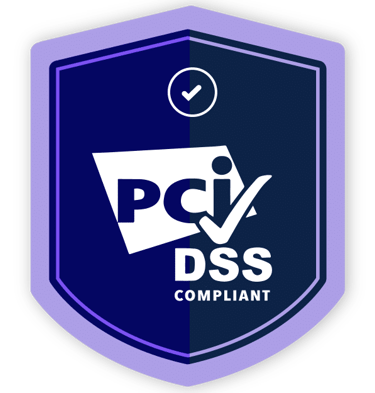What Every Hospice Should Know About CMS Targeted Probe and Educate (TPE) Audits
Learn everything hospices need to know about CMS’s Targeted Probe and Educate (TPE) audits—why they happen, how to prepare, and how to stay compliant with Medicare Conditions of Participation.
Hospices nationwide are increasingly being selected for Targeted Probe and Educate (TPE) audits by the Centers for Medicare & Medicaid Services (CMS). These audits focus on compliance, accuracy, and the quality of documentation associated with Medicare claims. For hospice agencies, understanding the TPE process and aligning internal practices with the Medicare Conditions of Participation (CoPs) is critical for operational success and financial protection.
Understanding the Purpose of TPE
CMS developed the TPE program to identify billing and documentation trends that deviate from normal patterns—not to punish, but to educate and correct. Hospices are typically selected for TPE when data reveals patterns such as:
Unusually long lengths of stay (LOS)
High utilization of continuous home care or general inpatient (GIP) care
Excessive claim denials or resubmissions
Inconsistencies between physician certification and clinical documentation
The intent behind TPE is to help hospices correct errors through education rather than penalties, allowing them to maintain compliance while improving care quality.
The TPE Audit Process
1. Notification of Selection
Hospices receive a notification letter from their Medicare Administrative Contractor (MAC) informing them that they have been selected for a TPE review. The letter specifies:
The audit’s purpose
The number and type of claims under review
The deadline to submit requested records
2. Probe Review
MACs typically review 20–40 claims per round. The goal is to identify billing or documentation deficiencies that conflict with Medicare rules.
3. Education and Correction
If errors are identified, the MAC schedules an education session with the hospice. This is an opportunity to clarify findings, understand the root cause of the errors, and receive guidance on corrective action.
4. Repeat Rounds if Needed
If the hospice’s error rate remains above CMS’s acceptable threshold (usually around 20%), the agency may undergo up to three rounds of review. If improvement remains insufficient after Round 3, the case may be referred for prepayment review, recoupment, or revocation of billing privileges.
Common Hospice Deficiencies Found in TPE
1. Inadequate Clinical Documentation
A leading cause of denials is failure to clearly support the terminal prognosis. This may include:
Vague or missing physician narratives in the Certification of Terminal Illness (CTI)
Insufficient evidence of decline in clinical notes
Documentation inconsistent with the stated terminal diagnosis
2. Missing or Late Face-to-Face (F2F) Encounters
CMS requires F2F encounters for recertifications beyond the first 180 days. Failure to conduct or document timely encounters remains one of the top reasons for denials.
3. Improper Level of Care Justification
Each hospice level of care—Routine Home Care, Continuous Home Care, Inpatient Respite, and General Inpatient (GIP)—has specific qualifying criteria. Claims often fail when documentation doesn’t justify the level billed, such as missing symptom management details for GIP stays.
4. Incomplete Interdisciplinary Group (IDG) Documentation
The IDG must update and evaluate the plan of care every 15 days under §418.56. Common findings include missing IDG notes, lack of measurable goals, and plans not reflecting the patient’s clinical trajectory.
5. Certification and Signature Issues
Unsigned or undated certifications, or certifications missing the attending physician’s involvement, result in technical denials that are easily preventable with better administrative oversight.
Best Practices for TPE Preparedness
1. Strengthen Documentation Quality
Hospices must ensure that every clinical note reflects measurable decline, symptom progression, and connection to the terminal diagnosis. Documentation should tell a clear story of why hospice care remains appropriate.
2. Conduct Regular Internal Audits
Perform monthly or quarterly internal pre-bill audits. Review certifications, F2F encounters, and IDG notes for completeness and accuracy before claim submission. This proactive approach can catch issues early and prevent denials.
3. Enhance Interdisciplinary Collaboration
The IDG should work cohesively to maintain compliance. Regular case reviews ensure that nurses, social workers, chaplains, and physicians are aligned in patient care plans and documentation.
4. Invest in Staff Education
Provide ongoing in-service training on documentation standards, hospice eligibility criteria, and updates to the Conditions of Participation. Staff should understand how their documentation impacts both compliance and reimbursement.
5. Maintain an Audit-Ready Environment
Every hospice should have a centralized binder or digital compliance file that includes:
Current licenses and certifications
Policies and procedures (updated annually)
Staff education records
Sample documentation for each level of care
Logs of F2F encounters, certifications, and IDG notes
Having these materials ready ensures immediate response capability when a TPE audit is initiated.
6. Establish a TPE Response Team
Assign dedicated personnel to oversee the TPE process. The team should include:
A TPE coordinator to manage communications and submissions
A clinical reviewer to ensure documentation accuracy
An administrator or compliance officer to oversee corrective actions
Aligning with the Conditions of Participation (CoPs)
The Medicare Conditions of Participation provide the foundation for TPE compliance. Hospices must demonstrate adherence in these key areas:
§418.22: Certification of Terminal Illness – must include clear documentation supporting prognosis.
§418.24: Election of Hospice Care – proper patient election statements and consent forms must be completed.
§418.56: Interdisciplinary Group, Care Planning – requires timely and measurable updates to care plans.
§418.58: Quality Assessment and Performance Improvement (QAPI) – mandates continuous performance review and correction.
§418.108: Clinical Records – must ensure records are accurate, complete, and readily retrievable.
Proactive compliance with these CoPs significantly reduces the risk of TPE findings and establishes a culture of continuous quality improvement.
Effective Documentation During a TPE Audit
When responding to TPE requests, the following documentation should be meticulously organized and submitted:
Physician certification and F2F forms (signed and dated)
Comprehensive visit notes showing functional decline and symptom burden
Medication administration records (MARs)
IDG meeting notes and updated care plans
Hospice election and consent forms
Communication logs between staff, physicians, and family
All records should be legible, complete, and submitted before the deadline. Keeping a log of submission dates and documents sent is essential for audit tracking and follow-up.
Turning Education Into Long-Term Compliance
One of the greatest benefits of TPE is the education component. Hospices should use the findings to strengthen their operations by:
Revising policies and templates to reflect CMS expectations
Providing retraining for staff on specific error trends
Incorporating audit outcomes into QAPI performance measures
By implementing corrective actions promptly, hospices can reduce future risk and enhance their compliance posture.
When to Seek Professional Guidance
Navigating TPE audits can be complex, especially for growing hospices or those with limited compliance infrastructure. Partnering with a professional consulting firm can provide the structure, tools, and expertise needed to manage the process efficiently.
A healthcare consulting firm can assist by:
Conducting mock audits and compliance assessments
Writing corrective action plans (CAPs)
Creating customized training modules for staff
Updating policies and procedures to align with CMS and MAC requirements
Conclusion
CMS’s Targeted Probe and Educate (TPE) audits are not just a test—they are an opportunity to refine compliance and improve patient care quality. Hospices that maintain strong documentation practices, foster interdisciplinary teamwork, and prioritize education can navigate TPE successfully while strengthening their overall operations.
Building a proactive compliance culture ensures your hospice remains audit-ready and confident in the face of CMS scrutiny.
For expert assistance in navigating TPE audits, compliance monitoring, and operational support, contact HealthBridge for professional consulting and management solutions tailored to your hospice agency’s needs.





